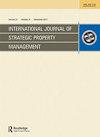EVALUATION OF URBAN LIVABILITY BASED ON SPATIAL DISTRIBUTION AND FUNCTIONAL RADIUS OF LAND USES
IF 1.7
4区 管理学
Q3 MANAGEMENT
International Journal of Strategic Property Management
Pub Date : 2023-12-18
DOI:10.3846/ijspm.2023.20580
引用次数: 0
Abstract
The present research has evaluated the spatial distribution and functional radius of land uses in the central district of Tehran city using objective and subjective methods. The findings showed; Land uses have a directional pattern with random distribution and a cluster. The functional radius also indicates a lack of desirable access for residents to land uses. On the other hand, the lack of per capita confirms the results of the functional radius of the land uses. Because the district is facing a per capita shortage in all uses and functional scales. The results of subjective evaluations also showed that residents lack ease of access to land uses. Also, the optimal access to land uses from the residents’ perspectives has been contrary to the standards of urban development plans. What has been quite evident is that spatial injustice in the distribution of land uses and the presence of disparities in access to land uses have had a negative impact on the livability of the district. Our results underscore the importance of a comprehensive examination of livability based on the spatial justice of land uses. This necessitates simultaneous attention to distribution patterns, functional radii of land uses, and the involvement of residents’ perceptions of that space.根据土地用途的空间分布和功能半径评估城市宜居性
本研究采用客观和主观方法对德黑兰市中心区土地用途的空间分布和功能半径进行了评估。研究结果表明:土地使用具有随机分布和集群的定向模式。功能半径也表明居民缺乏理想的土地使用通道。另一方面,人均不足也证实了土地使用功能半径的结果。因为该区在所有用途和功能规模上都面临人均不足的问题。主观评价的结果也表明,居民缺乏获得土地用途的便利性。同时,从居民的角度来看,土地使用的最佳可达性也与城市发展规划的标准相悖。非常明显的是,土地用途分布的空间不公正和土地用途获取方面存在的差异对该地区的宜居性产生了负面影响。我们的研究结果凸显了根据土地用途的空间公正性全面考察宜居性的重要性。这就需要同时关注土地用途的分布模式、功能半径以及居民对该空间的感知。
本文章由计算机程序翻译,如有差异,请以英文原文为准。
求助全文
约1分钟内获得全文
求助全文
来源期刊
CiteScore
4.00
自引率
18.50%
发文量
23
审稿时长
15 weeks
期刊介绍:
International Journal of Strategic Property Management is a peer-reviewed, interdisciplinary journal which publishes original research papers. The journal provides a forum for discussion and debate relating to all areas of strategic property management. Topics include, but are not limited to, the following: asset management, facilities management, property policy, budgeting and financial controls, enhancing residential property value, marketing and leasing, risk management, real estate valuation and investment, innovations in residential management, housing finance, sustainability and housing development, applications, etc.

 求助内容:
求助内容: 应助结果提醒方式:
应助结果提醒方式:


